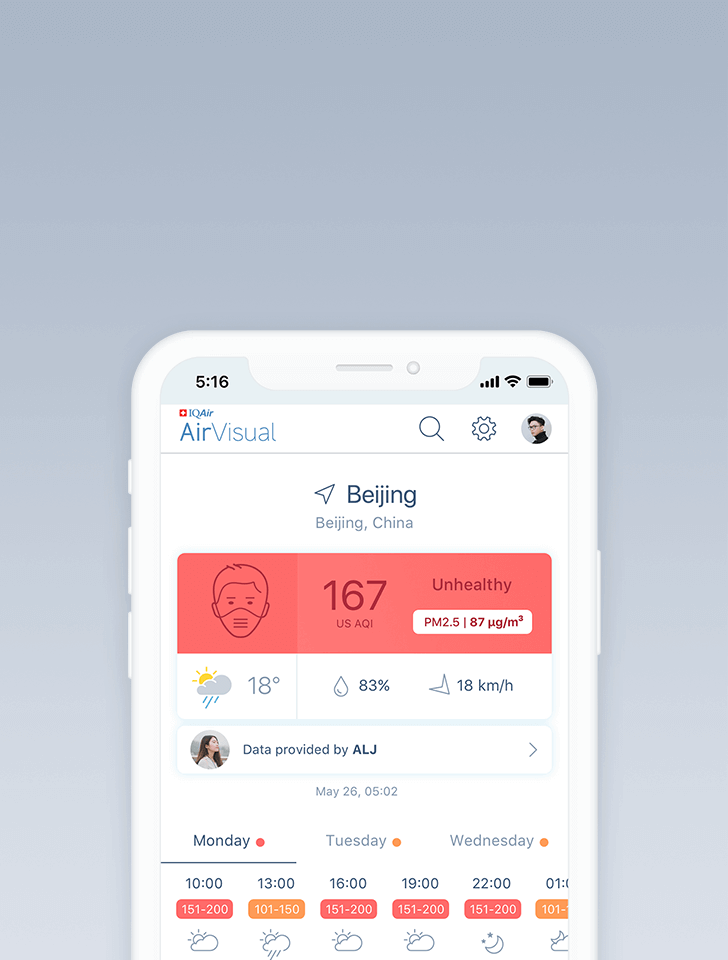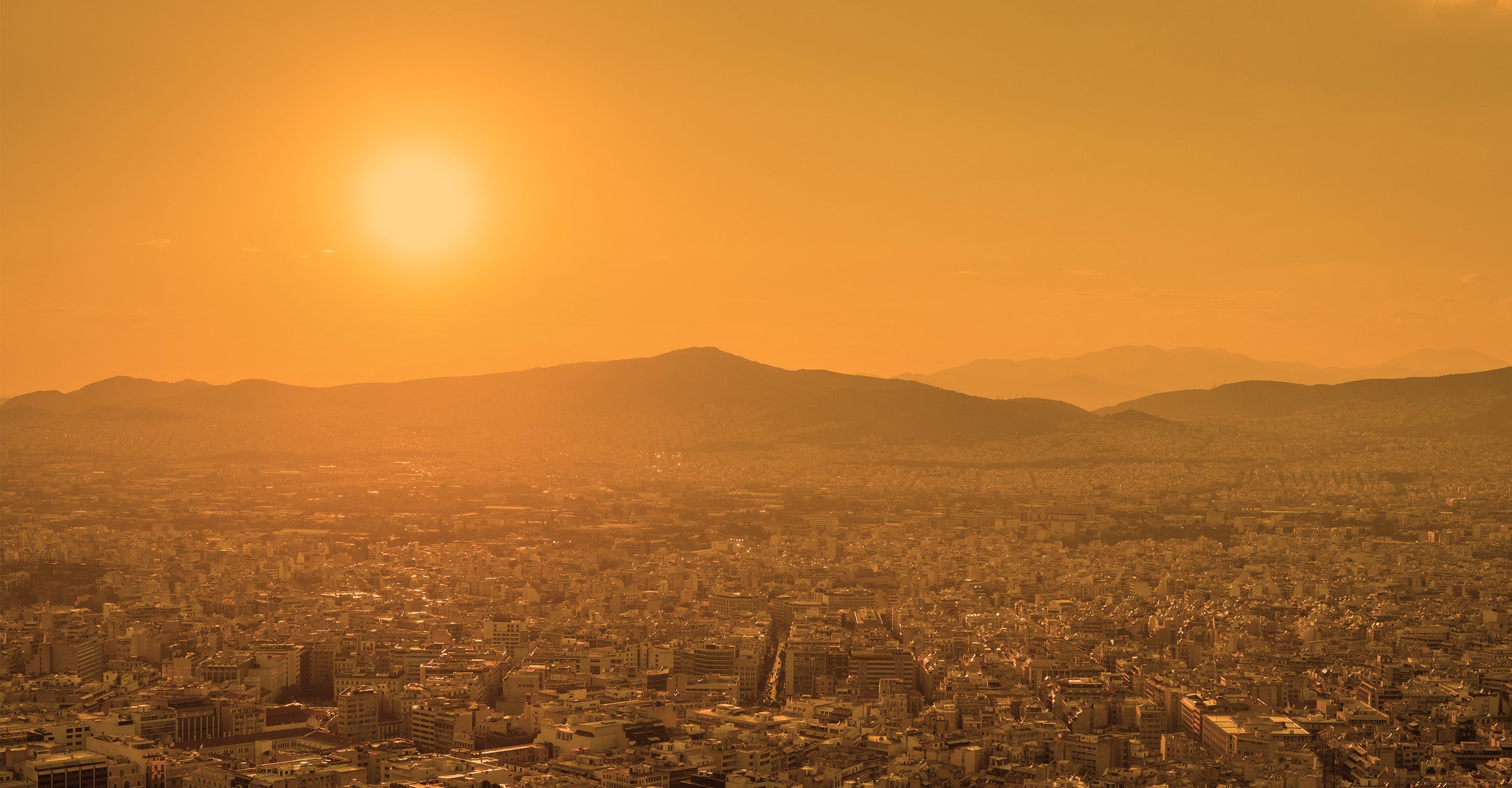Air quality in Kaifeng
Air quality index (AQI) and PM2.5 air pollution in Kaifeng
24.2K people follow this city

Kaifeng Air Quality Map
Real-time Kaifeng air pollution map
Weather
What is the current weather in Kaifeng?
| Weather | Clear sky |
| Temperature | 60.8°F |
| Humidity | 59% |
| Wind | 8.2 mp/h |
| Pressure | 29.6 Hg |
live aqi city ranking
Real-time China city ranking
| # | city | US AQI |
|---|---|---|
| 1 | Yangcun, Tianjin | 177 |
| 2 | Tongzhou, Beijing | 175 |
| 3 | Leshan, Sichuan | 171 |
| 4 | Zigong, Sichuan | 169 |
| 5 | Jilin, Jilin | 167 |
| 6 | Meishan, Sichuan | 166 |
| 7 | Chaoyang, Liaoning | 164 |
| 8 | Tangjiazhuang, Hebei | 162 |
| 9 | Jingmen, Hubei | 161 |
| 10 | Beijing, Beijing | 160 |
(local time)
SEE WORLD AQI RANKING3D animated air pollution map

live Kaifeng aqi ranking
Real-time Kaifeng air quality ranking
| # | station | US AQI |
|---|---|---|
| 1 | Yujing Park | 122 |
| 2 | Century Star Kindergarten | 117 |
| 3 | College of Technicians | 117 |
| 4 | North District Construction Command | 105 |
| 5 | Longtinggongyuan | 102 |
| 6 | Cancer Hospital | 93 |
(local time)
SEE WORLD AQI RANKINGUS AQI
111
live AQI index
Unhealthy for sensitive groups
Overview
What is the current air quality in Kaifeng?
| Air pollution level | Air quality index | Main pollutant |
|---|---|---|
| Unhealthy for sensitive groups | 111 US AQI | PM2.5 |
| Pollutants | Concentration | |
|---|---|---|
| PM2.5 | 39.5µg/m³ | |
| PM10 | 112.5µg/m³ | |
| O3 | 95µg/m³ | |
| NO2 | 14µg/m³ | |
| SO2 | 4µg/m³ | |
| CO | 600µg/m³ | |
PM2.5
x7.9
PM2.5 concentration in Kaifeng is currently 7.9 times the WHO annual air quality guideline value
Health Recommendations
What is the current air quality in Kaifeng?
| Reduce outdoor exercise | |
| Close your windows to avoid dirty outdoor air GET A MONITOR | |
| Sensitive groups should wear a mask outdoors GET A MASK | |
| Run an air purifier GET AN AIR PURIFIER |
Forecast
Kaifeng air quality index (AQI) forecast
| Day | Pollution level | Weather | Temperature | Wind |
|---|---|---|---|---|
| Tuesday, Apr 23 | Moderate 91 AQI US | 77° 59° | ||
| Wednesday, Apr 24 | Unhealthy for sensitive groups 122 AQI US | 82.4° 53.6° | ||
| Thursday, Apr 25 | Unhealthy for sensitive groups 110 AQI US | 86° 60.8° | ||
| Today | Unhealthy for sensitive groups 111 AQI US | 86° 60.8° | ||
| Saturday, Apr 27 | Unhealthy for sensitive groups 101 AQI US | 89.6° 60.8° | ||
| Sunday, Apr 28 | Unhealthy for sensitive groups 110 AQI US | 87.8° 60.8° | ||
| Monday, Apr 29 | Moderate 95 AQI US | 78.8° 59° | ||
| Tuesday, Apr 30 | Unhealthy for sensitive groups 113 AQI US | 78.8° 59° | ||
| Wednesday, May 1 | Moderate 73 AQI US | 66.2° 51.8° | ||
| Thursday, May 2 | Moderate 69 AQI US | 77° 46.4° |
Interested in hourly forecast? Get the app
AIR QUALITY ANALYSIS AND STATISTICS FOR Kaifeng
What is the level of air pollution in Kaifeng?
Kaifeng is a prefecture-level city in east-central Henan province, China. It is one of the eight ancient capitals of China. It is situated on the south bank of the Yellow River and had an estimated population of 4.5 million in 2019.
In 2021, it was experiencing a period of air quality that was classed as being “Unhealthy for sensitive groups” with a US AQI reading of 102. This is in accordance with recommendations by the World Health Organisation (WHO). The recorded levels of the six main pollutants were as follows: PM2.5 - 36 µg/m³, PM10 - 133.5 µg/m³, ozone (O3) - 90 µg/m³, nitrogen dioxide (NO2) - 18 µg/m³, sulphur dioxide (SO2) - 10 µg/m³ and carbon monoxide (CO) - 500 µg/m³. In order to protect yourself from air pollution in Kaifeng, it is advisable to keep doors and windows closed to avoid the dirty outdoor air. Those who are sensitive to dirty air should avoid going outdoors until the quality improves. Even healthy people are advised not to exercise outside under these conditions and operate an air purifier if one is available.
Does the air quality in Kaifeng vary throughout the year?
Air quality can differ throughout the day let alone throughout the year. It is dependent on many factors which can change very quickly.
Looking back at the recently released figures from the Swiss company IQAir.com, it can be seen that the air quality in Kaifeng seems dependent on the seasons of the year. From early May until the end of September, Kaifeng enjoyed a period of “Moderate” quality air with readings between 12.1 and 35.4 µg/m³. During spring and autumn, it deteriorated to the classification of being “Unhealthy for sensitive groups” with figures of between 35.5 and 55.4 µg/m³. This occurred during March and April and again in October. The winter months saw the quality decline to being “Unhealthy” with readings between 55.5 and 150.4 µg/m³.
Records have been kept since 2017 regarding the air quality and by studying past records it can be seen to be steadily improving. The first recorded figure was 66.8 µg/m³ followed by 64.6 µg/m³ the following year. Another improvement for 2019 with a reading of 61 µg/m³ before the 2020 figure of 55.5 µg/m³. This latest figure could well be lower due to the COVID-19 pandemic which stopped the movement of people and vehicles and suspended certain industrial activities.
Where does the polluted air in Kaifeng come from?
Looking at the sources of pollution: coal, industry, motor vehicles and dust are the main sources, accounting for about 90 per cent. The structure of this region is heavy industry. The energy source is dominated by coal, and the transportation structure is dominated by roads. The output of steel, coke, glass and raw materials all account for more than 40 per cent of the country output, and the coal consumption per unit of land area is four times the national average. 80 per cent of the bulk materials are transported by diesel trucks, and the emission intensity is high from these large old vehicles.
Affected by heating, the monthly average emission levels of PM2.5, organic carbon, black carbon and other components in this area in autumn and winter are 1.5 to 4 times that of non-heating seasons. In cities with large amounts of scattered coal production, such as Yangquan, Changzhi, and Jincheng, the emission levels of the above-mentioned pollutants are higher in autumn and winter.
What can be done to improve air quality in Kaifeng?
The "root cause" of air pollution is emissions, the weather is the inducement, and the secondary conversion of complex particulate matter is the catalyst. Most of the primary pollutants in heavily polluted weather are PM2.5. What are the main components of the particles with a diameter less than or equal to 2.5 microns, and where do they come from? This is a question that needs to be understood when prescribing the right medicine. Research studies have shown that the emissions of pollutants such as sulphur dioxide, nitrogen oxides, PM2.5, inhalable particulate matter (PM10), volatile organic compounds, ammonia, and carbon monoxide in many cities decreased by between 6 and 31 per cent year-on-year. Among them, sulphur dioxide emissions fell the most and ammonia emissions fell the least.
In the "blacklist" of PM2.5 components, organic matters are ranked first. At present, there are more than 100 types of organic matter under scrutiny, mainly from the primary emission of loose coal combustion, motor vehicle exhausts and the secondary conversion of volatile organic compounds. With the effective control of loose coal combustion emissions, the proportion of organic matter is declining. As one of the main pollutants in the atmosphere, sulphur dioxide is an important factor that causes acid rain, and it was once the most important source of secondary PM2.5. Many regions have always regarded the control of total sulphur dioxide emissions as the top priority of air pollution control.
How do the main pollutants affect human health?
The main pollutants affecting human health are particulate matter, ground-level ozone (O3) and nitrogen dioxide (NO2). The particles that damage human health are called PM2.5. These particles can penetrate deeply into the lungs and enter the bloodstream, affecting different organs and body functions. These particles may be emitted directly or formed in the atmosphere by several different emission pollutants (for example, ammonia (NH3) and volatile organic compounds (VOCs).
Ozone (O3) is an important secondary pollutant. It has a strong irritation to the lungs and will hinder the growth of plants. It is also a powerful greenhouse gas (GHG). When certain precursor pollutants react in the sun, O3 is formed in the troposphere near the surface of the earth. The powerful greenhouse gas methane (CH4) is a large part of the cause of the formation of O3. This tropospheric ozone is different from the upper atmosphere (stratosphere) ozone, which protects us from the sun’s ultraviolet rays.
Nitrogen oxides (NOx) are a group of chemical compounds that pollute the air. They are composed of nitrogen dioxide (NO2) and nitric oxide (NO). Among these compounds, NO2 is the most harmful and is produced by human activities. It will affect human health, reduce atmospheric visibility, and have a major impact on climate change. Finally, it is the key precursor for the formation of O3.





